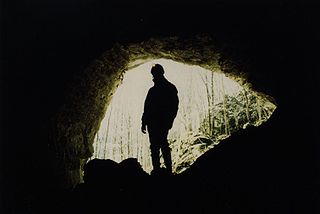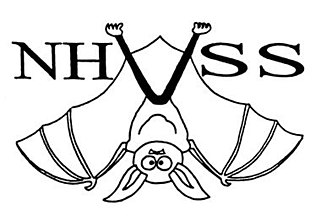
New Zealand Speleological Society is a national organisation for recreational cavers in New Zealand.
Contents
It was formed in 1949 by Henry Lambert and had approximately 300 members in 2010. [1]

New Zealand Speleological Society is a national organisation for recreational cavers in New Zealand.
It was formed in 1949 by Henry Lambert and had approximately 300 members in 2010. [1]
Their stated mission is: [2]
By:
Through:
The society also maintains the library at the Waitomo Caves Museum. [3]

Caving, also known as spelunking and potholing, is the recreational pastime of exploring wild cave systems. In contrast, speleology is the scientific study of caves and the cave environment.

Speleology is the scientific study of caves and other karst features, as well as their composition, structure, physical properties, history, ecology, and the processes by which they form (speleogenesis) and change over time (speleomorphology). The term speleology is also sometimes applied to the recreational activity of exploring caves, but this is more properly known as caving, potholing, or spelunking. Speleology and caving are often connected, as the physical skills required for in situ study are the same.

The National Speleological Society (NSS) is an organization formed in 1941 to advance the exploration, conservation, study, and understanding of caves in the United States. Originally headquartered in Washington D.C., its current offices are in Huntsville, Alabama. The organization engages in the research and scientific study, restoration, exploration, and protection of caves. It has more than 10,000 members in more than 250 grottos.

Harwoods Hole is a cave system located in the northwest of the South Island of New Zealand, in the Abel Tasman National Park. At 183 metres (600 ft), it is New Zealand's deepest vertical shaft. It was first explored in 1958, long after it was discovered.
A cave conservancy is a specialized land trust that primarily manages caves or karst features in the United States. Organizations that serve as cave management consultants to cave owners are usually considered cave conservancies. Almost all cave conservancies are non-profit organizations, but their management methodologies may be diverse. Cave conservancies often provide other services such as being advocates for responsible cave ownership and management, promoting the protection of caves, and advancing research to enhance and discover the values of caves.
Formed in 1956, the Australian Speleological Federation Inc. (ASF) is the national body representing those interested in the protection and sustainability of Australia's cave and karst environments. It has approximately 950 members across 24 caving clubs throughout all Australian states and territories.
The Victorian Speleological Association Inc. (VSA) was created in 1967 by the merger of the Victorian Cave Exploration Society (1957) and the Sub Aqua Speleological Society (1960). It is a member of the Australian Speleological Federation (ASF) which is in turn part of the International Union of Speleology. The Association aims to explore and chart the extensive cave systems in Victoria (Australia) and elsewhere, represent the interests of Victorian cavers to the relevant authorities and to encourage the preservation of caves in their natural state. There are over 800 caves in Victoria, many of them on private property. In addition to its exploration, campaigning and conservation work the Association's members oversee recreational expeditions underground for the general public.

The British Cave Research Association (BCRA) is a speleological organisation in the United Kingdom. Its object is to promote the study of caves and associated phenomena, and it attains this by supporting cave and karst research, encouraging original exploration, collecting and publishing speleological information, maintaining a library and organising educational and scientific conferences and meetings.

Caving in New Zealand is an established hobby as well as being a part of commercial tourism.
There are a number of caving organizations throughout the world.

Honeycomb Hill Cave is located in the Oparara Basin, on the northwestern edge of the South Island of New Zealand. The Oparara River flows through a section of the cave.
Cave conservation is the protection and restoration of caves to prevent or minimise the effects of human activities.
International Union of Speleology is a scientific non-governmental organization dedicated to the international promotion and coordination of cave and karst research. Founded in 1965, UIS is a member of the International Science Council in Paris and cooperates with UNESCO. In 2021–2022, UIS organized the International Year of Caves and Karst.

The Butler Cave Conservation Society (BCCS) is a 501(c)(3) non-profit Virginia corporation dedicated to the conservation, exploration, survey, preservation, and scientific study of the caves and karst in and around Burnsville Cove, Virginia.

Newcastle and Hunter Valley Speleological Society (NHVSS) is a caving club based in Newcastle, New South Wales (NSW), Australia.
Pınargözü Cave, is a cave 18 kilometres (11 mi) west of the town of Yenişarbademli in Isparta Province, Turkey. It is considered the longest cave in Turkey, although it has not yet been fully explored, and the precise extent to which it has been explored is in dispute.

The Austrian Speleological Association is a national caving organization was founded as an umbrella organization of Austrian caving clubs and show caves in 1949.
The Spanish Society of Speleology and Karst Science is a national caving organization of Spanish caving clubs to promote and disseminate the science of speleology and karst, founded in 1998.
Patricia Kambesis is an American caver, cartographer and educator.
The Waitomo Caves Discovery Centre is a museum located in the town of Waitomo in the North Island of New Zealand. The museum is also referred to as the Waitomo Caves Discovery Centre, the Waitomo Museum of Caves and the Waitomo Education Centre.